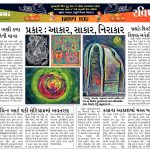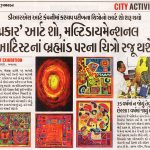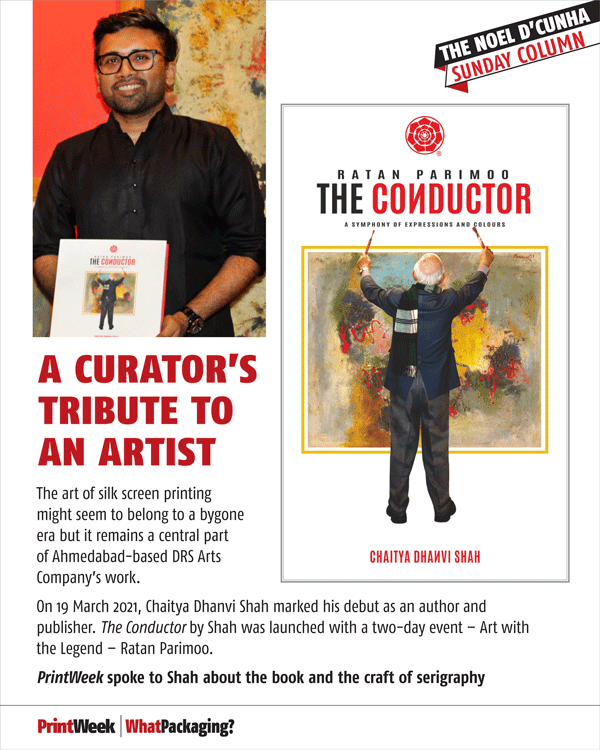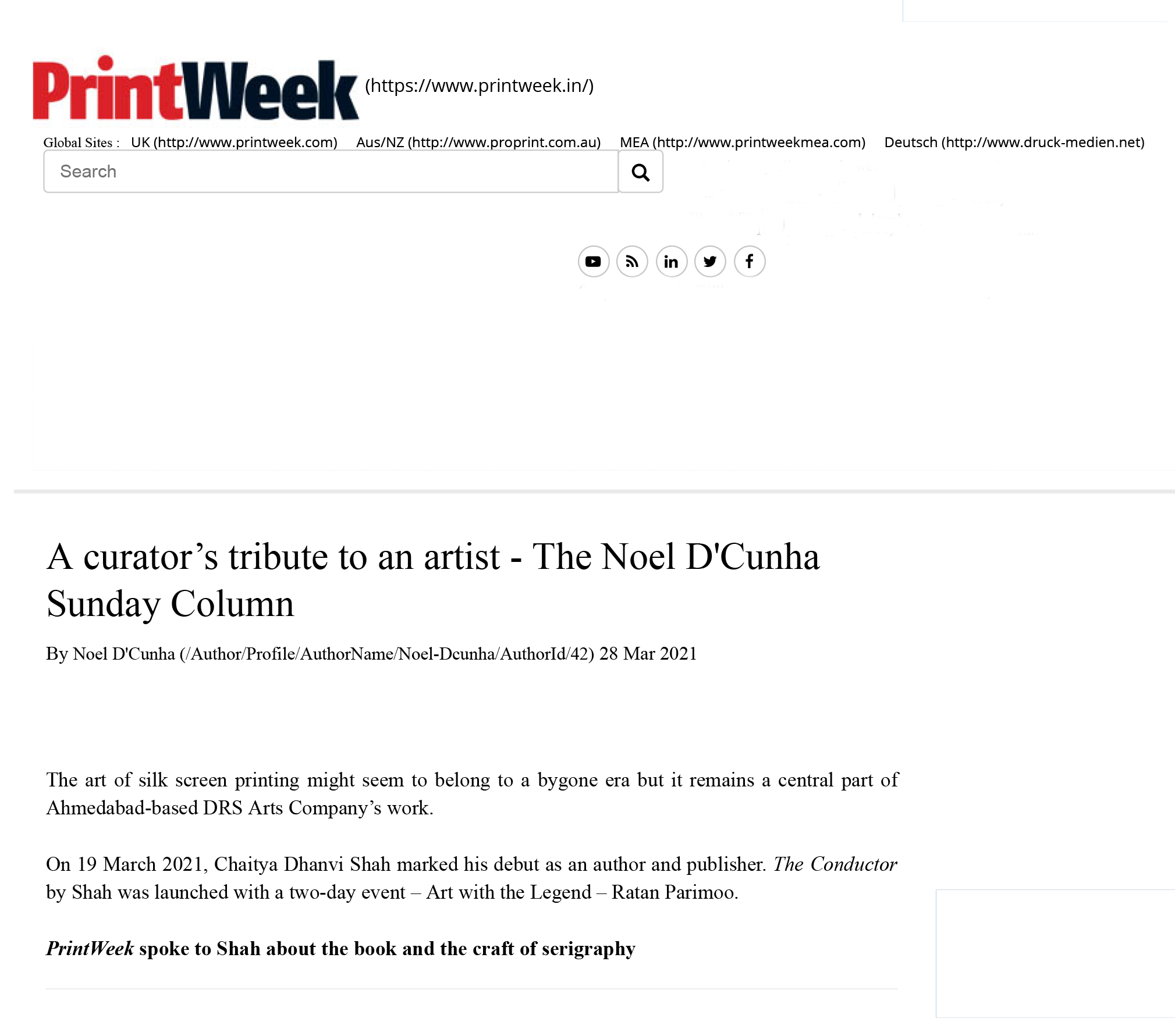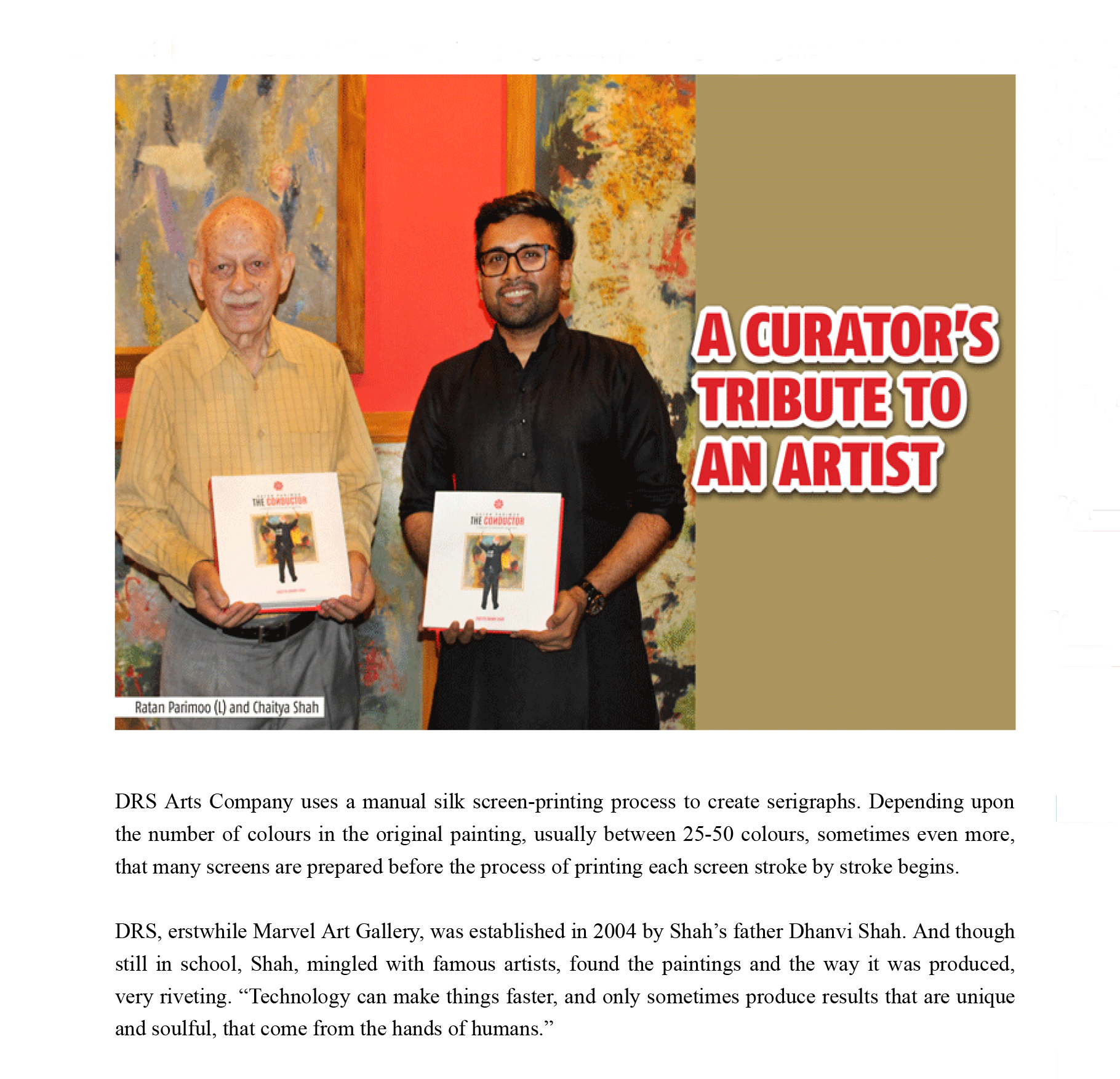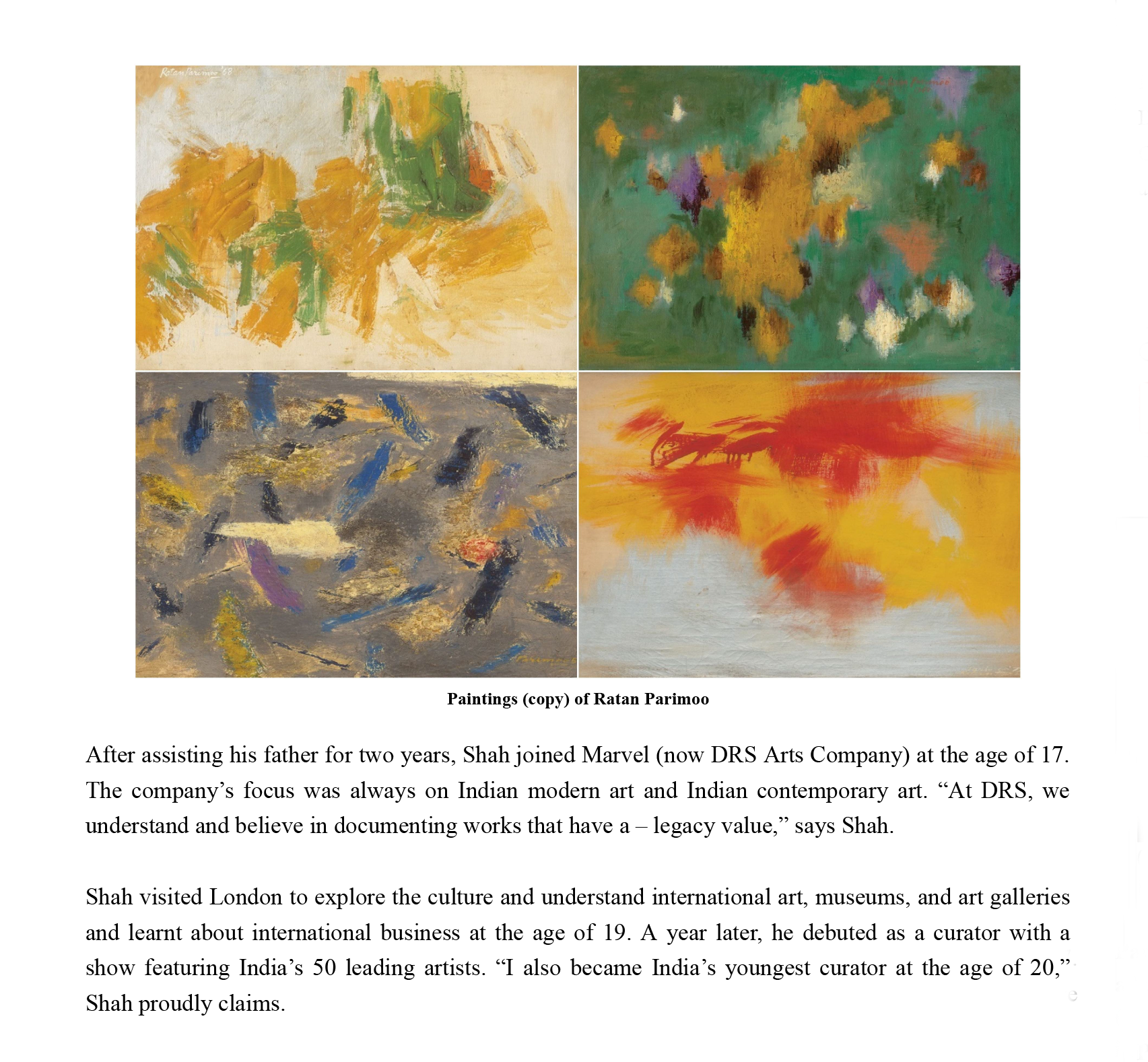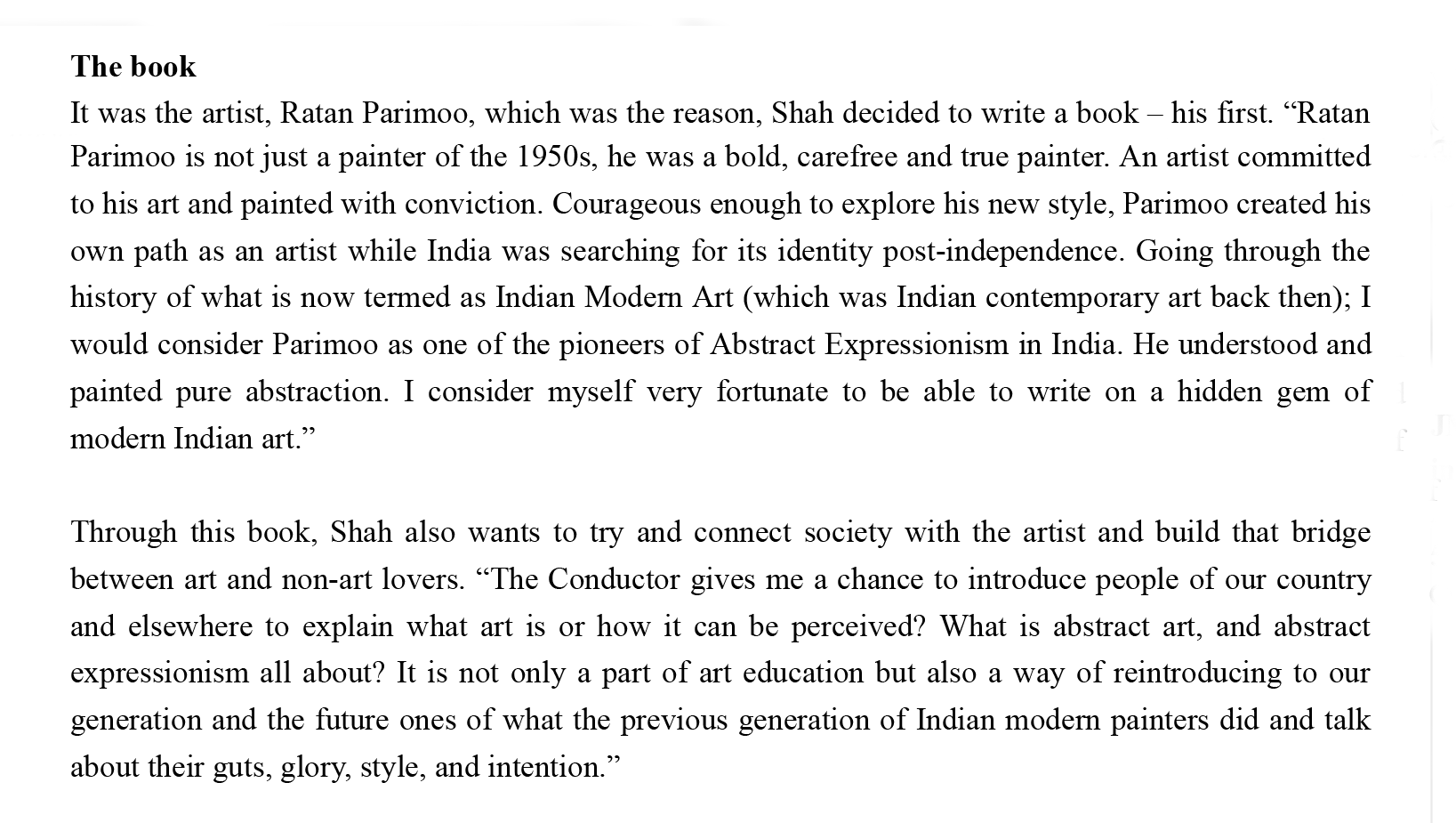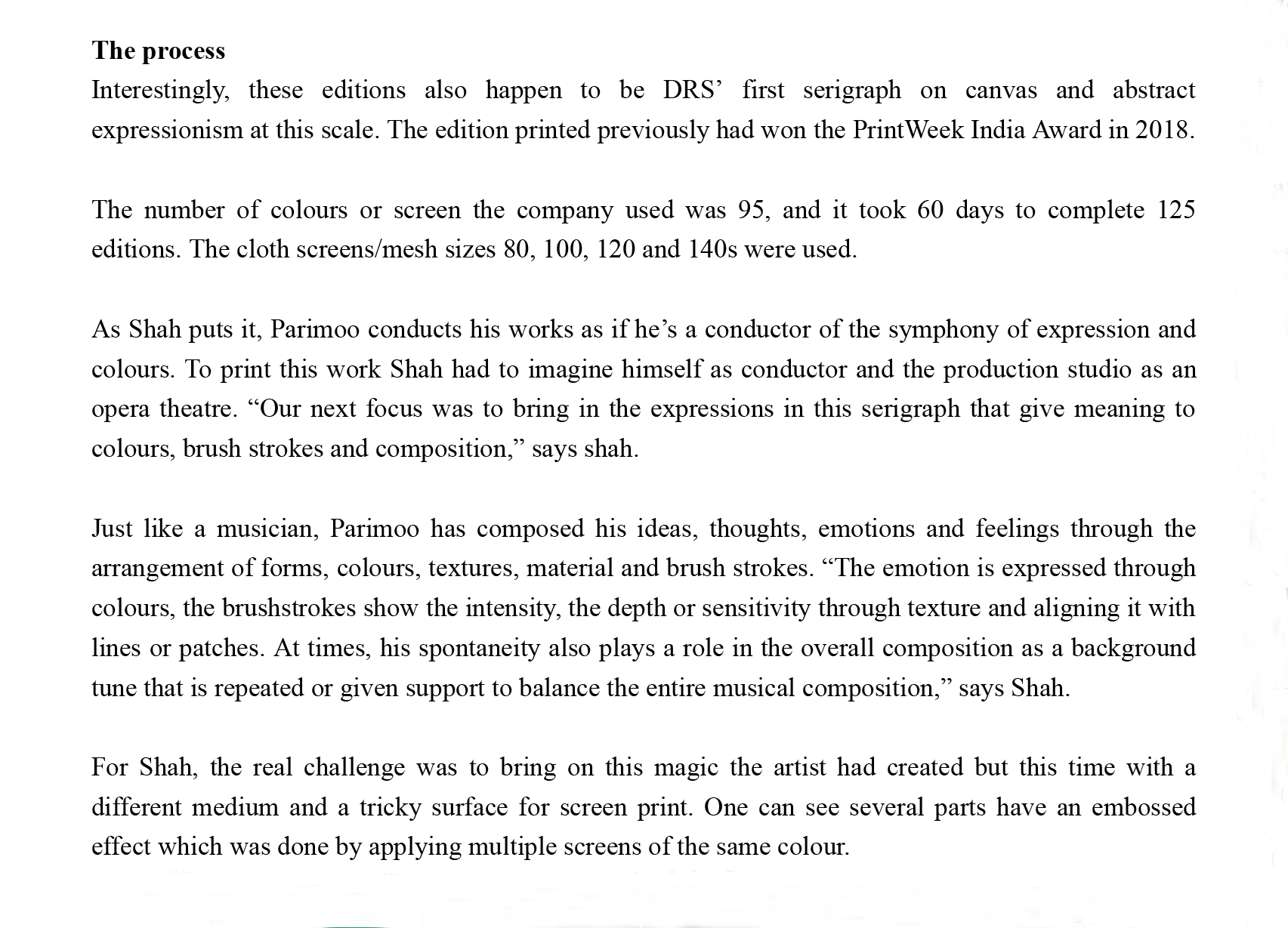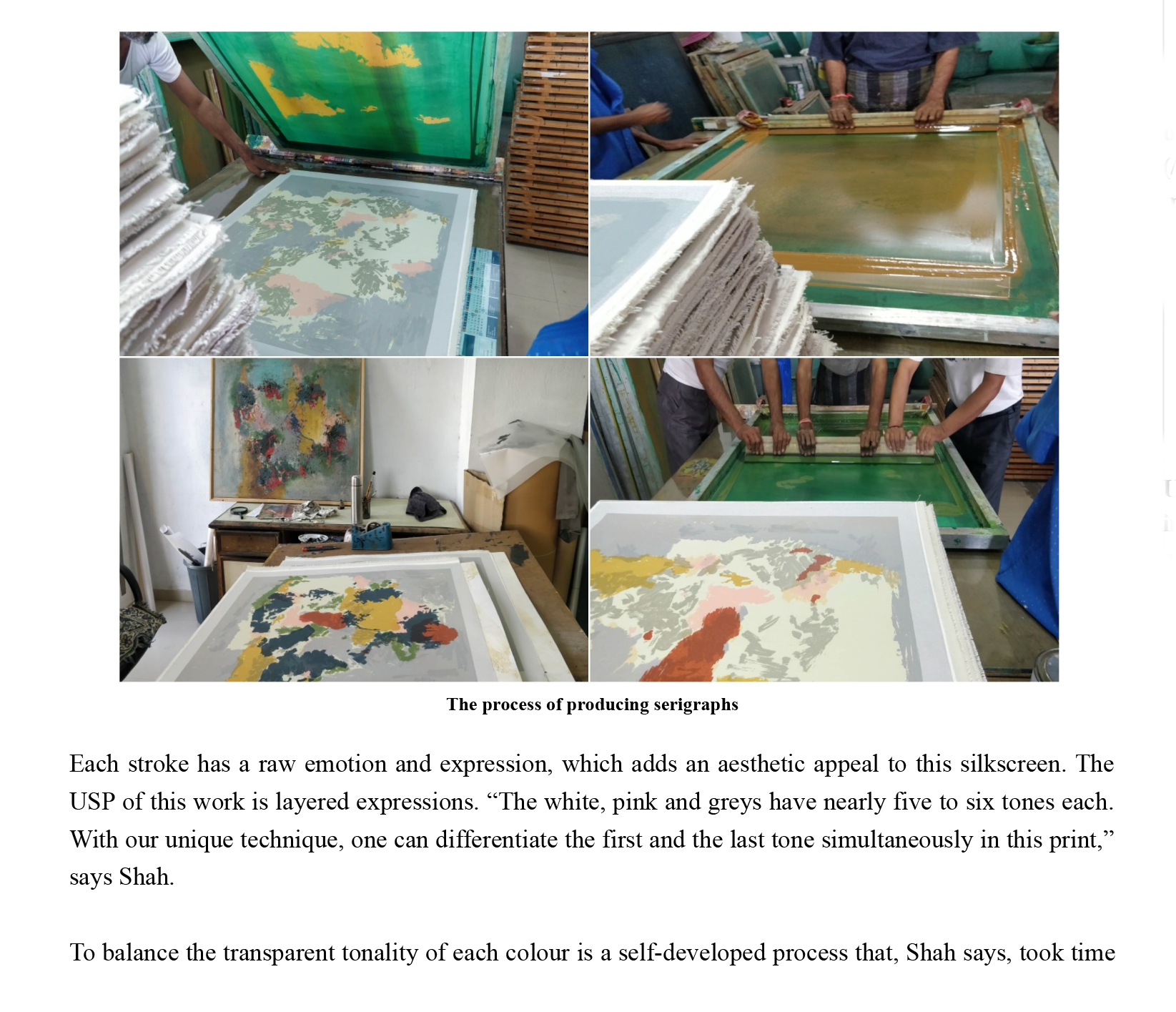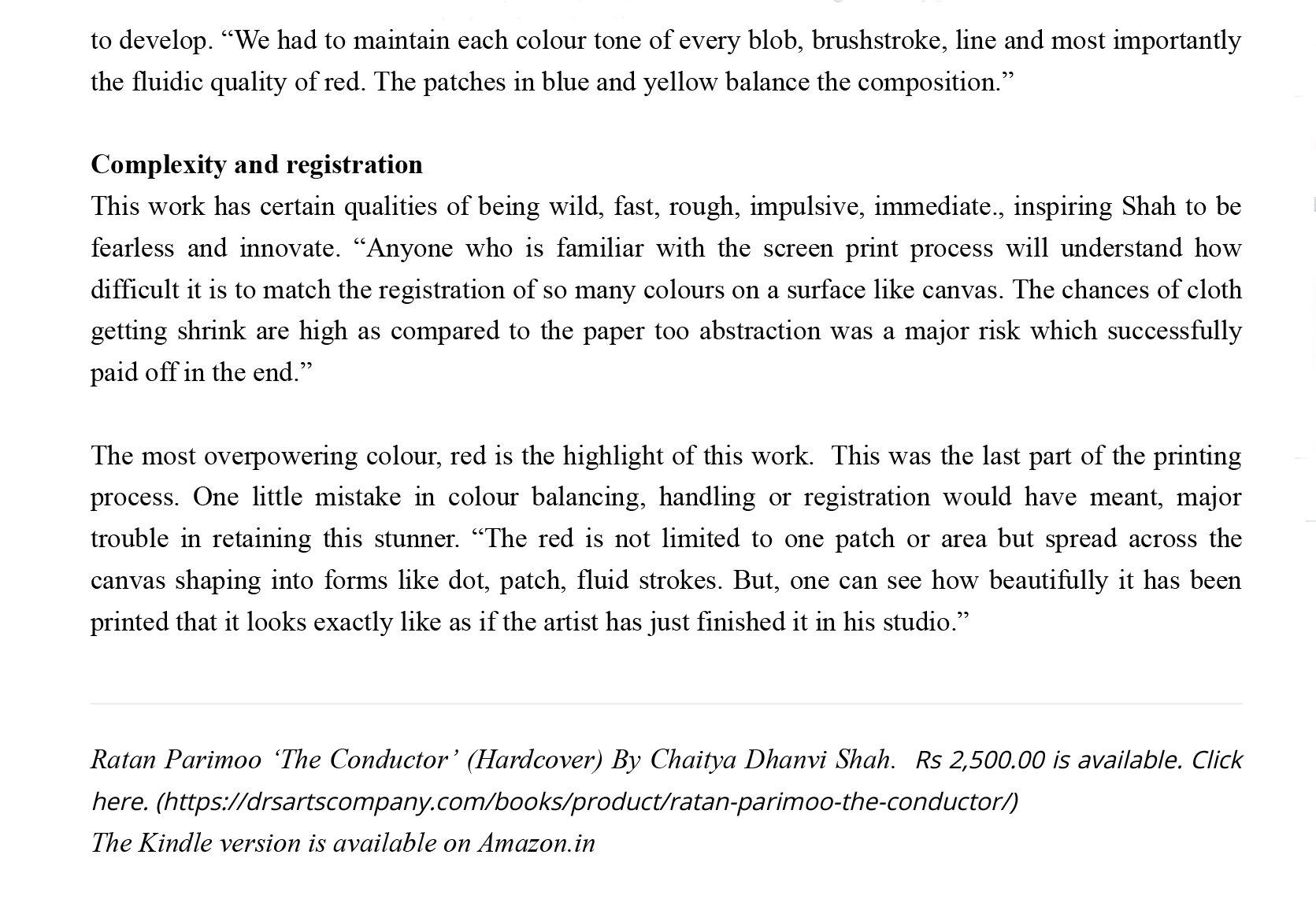A curator’s tribute to an artist – The Noel D’Cunha
Sunday Column
By Noel D’Cunha (/Author/Profile/AuthorName/Noel-Dcunha/AuthorId/42) 28 Mar 2021
The art of silk screen printing might seem to belong to a bygone era but it remains a central part of
Ahmedabad-based DRS Arts Company’s work.
On 19 March 2021, Chaitya Dhanvi Shah marked his debut as an author and publisher. The Conductor
by Shah was launched with a two-day event – Art with the Legend – Ratan Parimoo.
PrintWeek spoke to Shah about the book and the craft of serigraphy
The art of silk screen printing might seem to belong to a bygone era but it remains a central part of Ahmedabad-based DRS Arts Co…
DRS Arts Company uses a manual silk screen-printing process to create serigraphs. Depending upon
the number of colours in the original painting, usually between 25-50 colours, sometimes even more,
that many screens are prepared before the process of printing each screen stroke by stroke begins.
DRS, erstwhile Marvel Art Gallery, was established in 2004 by Shah’s father Dhanvi Shah. And though
still in school, Shah, mingled with famous artists, found the paintings and the way it was produced,
very riveting. “Technology can make things faster, and only sometimes produce results that are unique
and soulful, that come from the hands of humans.”
After assisting his father for two years, Shah joined Marvel (now DRS Arts Company) at the age of 17.
The company’s focus was always on Indian modern art and Indian contemporary art. “At DRS, we
understand and believe in documenting works that have a – legacy value,” says Shah.
Shah visited London to explore the culture and understand international art, museums, and art galleries
and learnt about international business at the age of 19. A year later, he debuted as a curator with a
show featuring India’s 50 leading artists. “I also became India’s youngest curator at the age of 20,”
Shah proudly claims.
The book
It was the artist, Ratan Parimoo, which was the reason, Shah decided to write a book – his first. “Ratan Parimoo is not just a painter of the 1950s, he was a bold, carefree and true painter. An artist committed
to his art and painted with conviction. Courageous enough to explore his new style, Parimoo created his
own path as an artist while India was searching for its identity post-independence. Going through the
history of what is now termed as Indian Modern Art (which was Indian contemporary art back then); I
would consider Parimoo as one of the pioneers of Abstract Expressionism in India. He understood and
painted pure abstraction. I consider myself very fortunate to be able to write on a hidden gem of
modern Indian art.”
Through this book, Shah also wants to try and connect society with the artist and build that bridge
between art and non-art lovers. “The Conductor gives me a chance to introduce people of our country
and elsewhere to explain what art is or how it can be perceived? What is abstract art, and abstract
expressionism all about? It is not only a part of art education but also a way of reintroducing to our
generation and the future ones of what the previous generation of Indian modern painters did and talk
about their guts, glory, style, and intention.”
The process
Interestingly, these editions also happen to be DRS’ first serigraph on canvas and abstract
expressionism at this scale. The edition printed previously had won the PrintWeek India Award in 2018.
The number of colours or screen the company used was 95, and it took 60 days to complete 125
editions. The cloth screens/mesh sizes 80, 100, 120 and 140s were used.
As Shah puts it, Parimoo conducts his works as if he’s a conductor of the symphony of expression and
colours. To print this work Shah had to imagine himself as conductor and the production studio as an
opera theatre. “Our next focus was to bring in the expressions in this serigraph that give meaning to
colours, brush strokes and composition,” says shah.
Just like a musician, Parimoo has composed his ideas, thoughts, emotions and feelings through the
arrangement of forms, colours, textures, material and brush strokes. “The emotion is expressed through
colours, the brushstrokes show the intensity, the depth or sensitivity through texture and aligning it with
lines or patches. At times, his spontaneity also plays a role in the overall composition as a background
tune that is repeated or given support to balance the entire musical composition,” says Shah.
For Shah, the real challenge was to bring on this magic the artist had created but this time with a
different medium and a tricky surface for screen print. One can see several parts have an embossed
effect which was done by applying multiple screens of the same colour.
Each stroke has a raw emotion and expression, which adds an aesthetic appeal to this silkscreen. The
USP of this work is layered expressions. “The white, pink and greys have nearly five to six tones each.
With our unique technique, one can differentiate the first and the last tone simultaneously in this print,”
says Shah.
To balance the transparent tonality of each colour is a self-developed process that, Shah says, took time to develop. “We had to maintain each colour tone of every blob, brushstroke, line and most importantly
the fluidic quality of red. The patches in blue and yellow balance the composition.”
Complexity and registration
This work has certain qualities of being wild, fast, rough, impulsive, immediate., inspiring Shah to be
fearless and innovate. “Anyone who is familiar with the screen print process will understand how
difficult it is to match the registration of so many colours on a surface like canvas. The chances of cloth
getting shrink are high as compared to the paper too abstraction was a major risk which successfully
paid off in the end.”
The most overpowering colour, red is the highlight of this work. This was the last part of the printing
process. One little mistake in colour balancing, handling or registration would have meant, major
trouble in retaining this stunner. “The red is not limited to one patch or area but spread across the
canvas shaping into forms like dot, patch, fluid strokes. But, one can see how beautifully it has been
printed that it looks exactly like as if the artist has just finished it in his studio.”
Ratan Parimoo ‘The Conductor’ (Hardcover) By Chaitya Dhanvi Shah. Rs 2,500.00 is available. Click
here. (https://drsartscompany.com/books/product/ratan-parimoo-the-conductor/)
The Kindle version is available on Amazon.in




